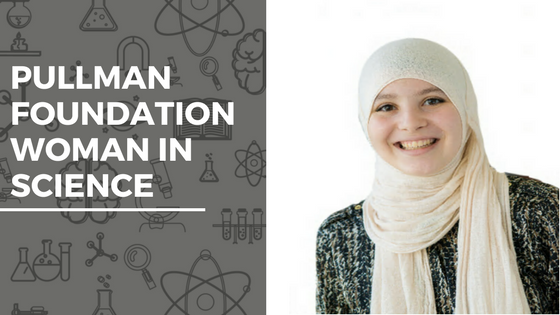Amel Baker, a junior at Loyola University Chicago studying psychology and cellular/molecular neuroscience, shares her affinity for science and how she gives back to the community with tutoring for four departments and starting the LUC S.T.A.R.
Any effort I put into a science class, I see it coming back again in the next. For example, when I first started out with general chemistry, we discussed the behavior of acids and bases. Almost three years later, I am being reminded of its importance in biochemistry when looking at hemoglobin’s binding affinity for oxygen. The best part is the reactions science students discuss are ongoing every second of the day — basically, science and I relate on a personal level.
In the classroom, I transform into an aspiring chemist, biologist, physicist, and neuroscientist. Once I leave, these moments follow me to influence my everyday schedule. I currently tutor for a few departments on campus where I try to dance through each session with different science partners — sometimes it’s fast-paced with organic chemistry. Other days, I get to slow dance with statistics as I discuss the importance of properly approaching the null hypothesis. I love tutoring these subjects because not only do they force me to revisit old friends, but I get to realize that there is still a lot of room for the relationship. Tutoring essentially challenges me to keep the questions going and the eager curiosity alive. To keep it fresh, I work with a freshman in CPS at Curie High School every Saturday through a Loyola program called TNT. I am one of many academic coaches who is dedicated to keeping true relationships with freshmen and seeing them not only graduate but succeed.
Some nights, I explore astronomy through a student organization I helped form. Astronomy has always been an interest of mine, but the puzzle that is my education did not have room for any extra pieces. Our small group gets together to think about the expanding universe and all the beautiful things that come with this science. We’ve done a few community engagements, observatory visits, and led our own little fundraiser for the Children’s Miracle Network.
Last summer, I was at Case Western Reserve’s School of Medicine for SMDEP, Summer Medical and Dental Program, now called Summer Health Professions Education Program (SHPEP). The experience was amazing. I was able to shadow at a hospital in multiple departments including family medicine, neurosurgery, and the emergency department. After observing a C3-C5 anterior cervical discectomy and fusion surgery correcting for alive motor cells that could not relay, my desire to pursue neurosurgery became confirmed. The program celebrates diversity in medicine by building community with groups of students from all different backgrounds and universities while exploring medicine’s role with different demographics through seminars with health professionals. Because academics are a priority in all health-related fields, there were supplemental courses in biologies, chemistries, and mathematics depending where you tested. Lastly, I was part of a public health research project that was presented to a panel of physicians at the conclusion of the program. I encourage all current freshmen and sophomores to apply for the summer. There are multiple different sites so this medical adventure could be anywhere!
